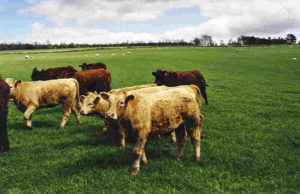Summering Youngstock On Rented Grass
23 May 2017BVD
- Is your herd’s BVD status up to date and not due to expire over the summer? If required carry out a check test on 9 to 18 month old animals before they are turned out. This involves collecting blood samples from 5 unvaccinated animals per management group (10 for dairy herds).
- If you have negative status and the holding the animals are moving to does not then you may lose your negative status when they come home – unless they have previously been individually tested for BVD virus. To avoid this inconvenience screen them for BVD virus before they move.
- The area they are grazing should have secure fencing to prevent contact with other cattle and sheep. If you are a member of the Premium Cattle Health Scheme then double fencing (or equivalent) with a 3m gap is required.
- If you are in any doubt about biosecurity and the BVD status of surrounding cattle then consider completing a course of BVD vaccination before turn out.
Leptospirosis
- The bacteria that causes Leptospirosis is shed in urine and watercourses pose an infection risk if other livestock are grazing upstream. Ideally mains water should be provided but this is not always possible. Completing a course of Leptospirosis vaccination before turn out should be considered.
Parasites
- Lungworm outbreaks are unpredictable. Although outbreaks are most common in the late summer and autumn, vaccination needs to be carried out before turn out. Two doses at a four week interval are required. No wormers should be given until at least two weeks after the second dose.
- The risk of problems with parasitic gastroenteritis (worms) will depend on the previous grazing history of the fields. This will be highest if they have been grazed by youngstock during autumn and winter 2016. Many control options are available and should be discussed with your vet, bearing in mind the availability or lack of handling facilities at grass.
- Outbreaks of coccidiosis can be seen after turnout and a diagnosis will require collecting faecal samples from any cases of scour. Coccidial oocysts (eggs) survive in the environment for a very long time and the highest risk fields will be those grazed by youngstock in the previous 12 months – particularly if coccidiosis was diagnosed. If the risk is known to be high then discuss preventive treatment with your vet.
- Flies can be a nuisance in late summer and autumn particularly if the ground is sheltered. This carries the risk of summer mastitis and loss of a quarter if infection occurs. Planning ahead and using some form of fly control will reduce this risk.
Heather Stevenson, heather.stevenson@sac.co.uk
Sign up to the FAS newsletter
Receive updates on news, events and publications from Scotland’s Farm Advisory Service

